Implantation of the left atrium auricle occluder in atrial fibrillation
About the problem of atrial fibrillation
Atrial fibrillation (atrial fibrillation) occurs in 2% of the world's population. In Russia, approximately 2.9 million people suffer from this disease, of which 2 million have been diagnosed with the so-called non-valvular form (when the cause is not related to the heart valves) .
The most dangerous complication of this type of arrhythmia is a stroke caused by a blockage of a cerebral artery by a blood clot that has formed in the heart, or rather in the auricle of the left atrium (a small pocket-shaped outgrowth of the left atrium). In 90% of cases, it is blood clots from the auricle of the left atrium that cause such strokes.
To prevent the formation of blood clots, patients are usually prescribed drugs that prevent thrombosis (anticoagulants). However, these medications increase the risk of dangerous bleeding.
Every year in Russia, 600,000 patients with atrial fibrillation seek medical help. Approximately 12 thousand of them are not allowed to take new oral anticoagulants (PLA), and 80 thousand more are not recommended. At the same time, the risk of stroke in atrial fibrillation is 5 times higher than in ordinary people, and the risk of recurrent strokes reaches 20%, which significantly increases the likelihood of death or severe disability.
To whom occluder implantation is indicated:
-
patients who refuse to take anticoagulants and choose the procedure for closing the left atrium
-
patients with central nervous system (CNS) disorders that increase the risk of falls and injuries (for example, epilepsy)
-
people with a high risk of injury (involved in extreme sports, riding a motorcycle) who do not want to change their lifestyle
-
patients with both a high risk of blood clots and a high risk of bleeding
-
patients who need to take a triple combination of blood thinners for a long time
-
patients with oncological diseases that increase the risk of spontaneous bleeding
-
patients who underwent electrical isolation of the auricle of the left atrium during the treatment of arrhythmia
-
patients with chronic kidney disease and glomerular filtration rate of less than 15 ml/min
-
incapacitated patients who cannot control the intake of anticoagulants
What is an occluder
The occluder is a self-opening device of various sizes (selected depending on the shape and size of the LP eyelet). After installation, it is securely fixed in the eyelet, completely disconnecting it from the blood flow. The device is fixed with micro-hooks, and a special coating on the side facing the left atrium cavity promotes rapid overgrowth of the device with natural heart tissue.
Closing the left atrium with an occluder prevents strokes by eliminating the source of blood clots, and reduces the likelihood of hemorrhages in the brain, allowing patients with a high risk of bleeding to stop taking anticoagulants.
How is the procedure performed
Before the procedure, computed tomography (MSCT) with contrast is performed to exclude the presence of a blood clot in the auricle of the left atrium, as this is an absolute contraindication to the intervention.
The implantation procedure itself is performed in a special operating room under X-ray control and supervision with ultrasound examination of the heart through the chest and esophagus. The doctor punctures the femoral vein and inserts a special instrument with a needle into the right atrium. Then the atrial septum is punctured (the wall between the right and left atria). After that, the doctor inserts a catheter into the left atrium and injects a contrast agent for its visualization.
Based on the data obtained, the appropriate size of the occluder is selected. The device is delivered to the left atrium and installed correctly. The doctor checks the reliability of fixation and the absence of gaps between the occluder and the wall of the auricle. If the installation is successful, the delivery device is disconnected. If the occluder is in an unsatisfactory position, it can be pulled back in and reinstalled.
After removing the delivery device, the puncture site on the femoral vein is clamped until the bleeding stops. The patient is transferred to the intensive care unit for several hours under observation. Bed rest is scheduled for 12 hours. If there are no complications, the patient can be discharged home the next day.
After discharge
During occluder engraftment and atrial septal hole healing, the patient is assigned one of the treatment options:
-
3 months of double disaggregant therapy
-
3 months of taking new oral anticoagulants or vitamin K antagonist drugs
-
45 days of taking new oral anticoagulants and 3 months of dual antiplatelet therapy
-
45 days of taking vitamin K antagonists and 3 months of dual antiplatelet therapy
A follow-up ultrasound examination of the heart is also recommended 45 and 90 days after the procedure.
How long does the operation last?
about 60 minutes, performed under general anesthesia
How long does the hospitalization last?
24-48 hours
When can I get back to physical activity?
1 month after the procedure
Is it possible to perform an MRI scan with an occluder?
Yes, the device will in no way affect the operation of an MRI machine, even with a power of 3 Tesla.
Doctors

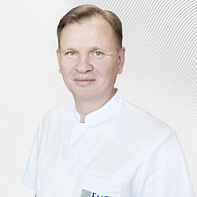
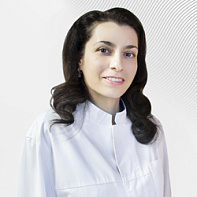
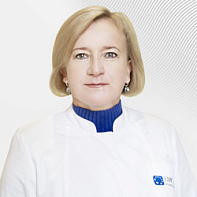
.jpg)
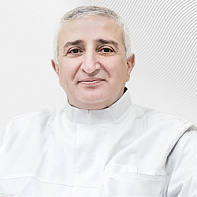

.jpg)
.jpg)
.jpg)
.jpg)
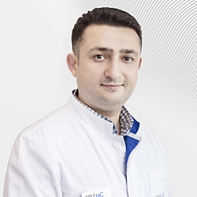

.jpg)


.jpg)
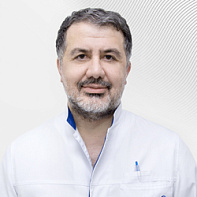

- Specializes in research of the cardiovascular system, including in the framework of surgical vascular pathology, as well as in such pathologies as ACS and oncological cancer
- Field of activity — ultrasound examinations of blood vessels in all regions




